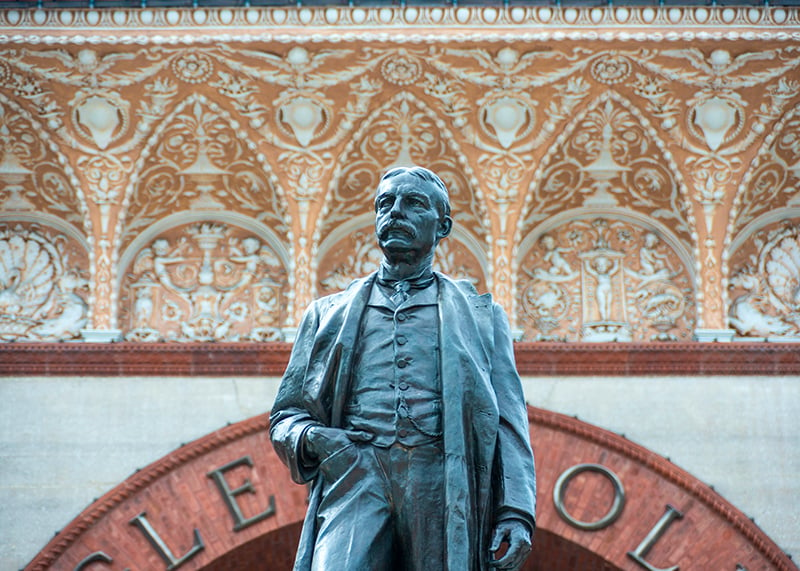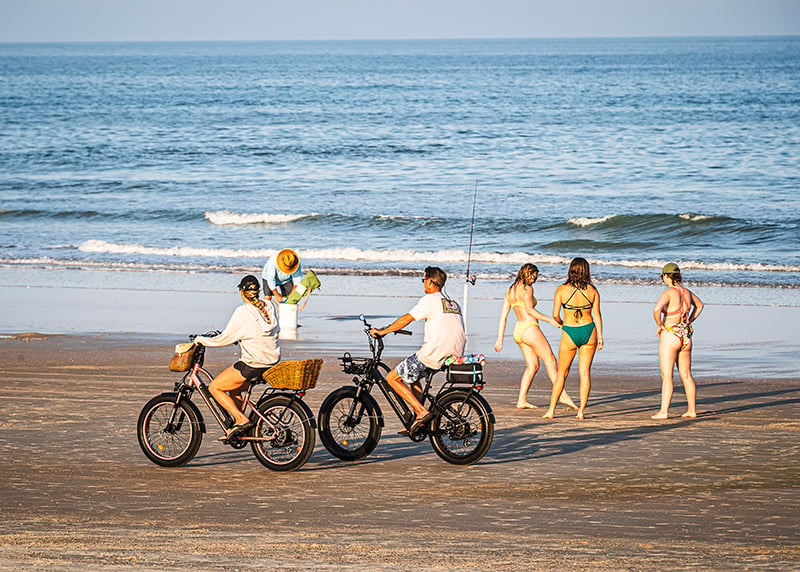Conservation Guide: The Tree That Was a Testament to Time
Fire destroyed a 3,500-year-old bald cypress in 2012, but a community—with the help of agricultural science—works to preserve its legacy.
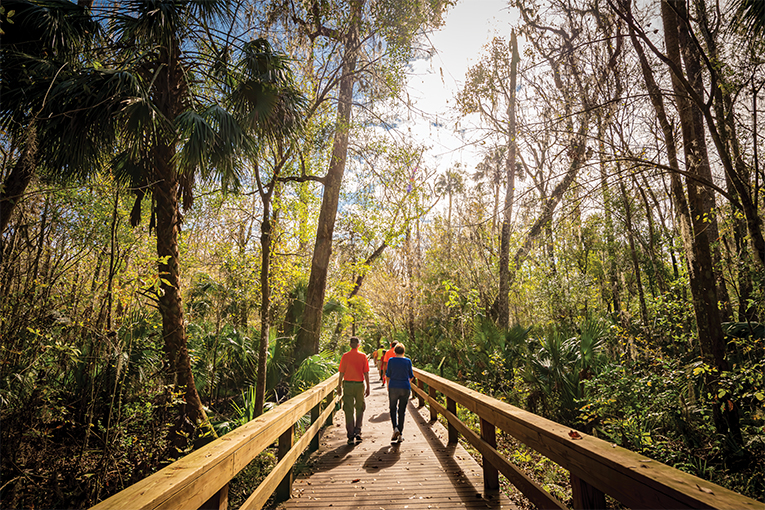
Big Tree Park is part of the Spring Hammock Preserve located in Longwood. Visitors are amazed with its enormous cypress trees, including Lady Liberty, a bald cypress that is over 2,000 years old. (ROBERTO GONZALEZ)
Long before Central Florida became a world-class travel destination, families would gather at what would become known as Big Tree Park in Longwood, where they would crane their necks to behold The Senator. This 165-foot-tall bald cypress preceded the birth of Christ by 1,500 years.
People walked, rode horses or buggies, or traveled by boat to marvel at the monument that had marked millennia. They would buy concessions at a stand and picnic in its shade, take pictures at its base, crowd inside its hollow, carve initials or messages on its trunk, and grasp hands while looping around it to show its impressive girth.
The loss felt around the world
The Senator had withstood lightning strikes, hurricanes, droughts, and wars, but it could not fight one thing: human carelessness. In January 2012, the tree erupted into a pillar of fire as a woman using drugs lit a fire while standing within the tree’s hollow, accidentally igniting and destroying it.
“The Senator, as near as we can tell, was the sixth-oldest tree on Earth, and he was the oldest and largest bald cypress ever,” according to Bennett Lloyd, coordinator of the Museum of Seminole County History in Sanford. “Historically, as a part of the cultural identity of this area, it was a huge loss.”
The story gained traction nationally and internationally while locals struggled to grasp that an enduring icon was no more. “Everyone who put eyes on her and touched her in the day became affected by it,” according to Bill Pandos, manager of Seminole County’s Division of Greenways and Natural Lands.
They also felt the loss in the 1,400-acre hammock where the tree had made its home. Bald cypresses “help with the stabilization of our forests,” acting “like a sponge” to prevent flooding, says Jim Duby, Seminole County’s Natural Lands program manager. The Senator would have provided habitat for the likely extinct ivory-billed woodpecker along with osprey, eagles, and herons, all of which build nests near water to protect them from predators.
“None of us ever thought we would lose The Senator,” Duby adds. “It had been there for 3,500 years. We were really caught off guard.” The loss became a lesson Duby and his team soon shared at the Florida Recreation & Park Association conference to ensure other park stewards prevented similar tragedies.
Though Big Tree Park’s longstanding sentinel was gone, hope was not lost but found at the intersection of nature, science, and providence.
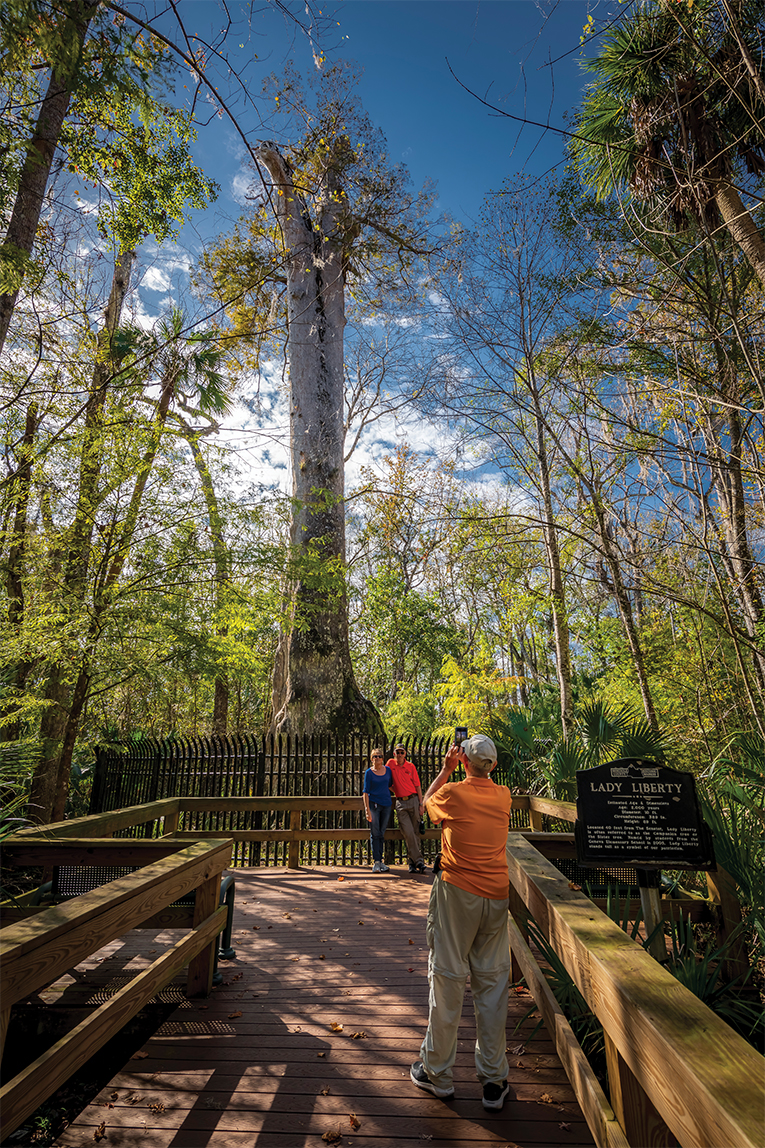
Posing beneath Lady Liberty, who along with The Senator were some of the oldest trees in Florida. (ROBERTO GONZALEZ)
A new chapter
Nature had not left Big Tree Park without a mascot. Just a few yards down the boardwalk from The Senator’s charcoaled remains stands its 90-foot-tall sister tree, Lady Liberty, a youth by comparison at just 2,000 years old.
Science and providence were also at play. In the 1990s, North Florida nursery owner Marvin Buchanan created some root grafts using limbs that had fallen off the Senator to develop better, taller cypress trees. About 15 Senator clones survived. For years, they remained all but forgotten.
Then, after the fire, Seminole County officials remembered the clones and asked Buchanan to plant one in Big Tree Park. So Buchanan’s crew undertook the “monumental task” of transporting the 50-foot-tall clone—dubbed The Phoenix—to Big Tree Park. Another clone was planted in Reiter Park, also in Longwood.
“We’re very fortunate we were at the right place at the right time,” Buchanan says. Creativity would also have its hand in preserving the big tree’s legacy.
Moving forward
County officials carefully considered how to honor the legacy of Big Tree Park’s namesake. “When it first happened, they tossed all kinds of ideas about,” Duby recalls. “One of them was, it’s nature. Let nature recycle it,”—the county’s standard response to fallen trees. “But with all the cultural and social connections it had over the years, we didn’t think that was the appropriate path to go.”
The boardwalk leading to The Senator and Lady Liberty had to be removed to allow for clearing the fallen behemoth, so the county installed a more expansive boardwalk. “Our thought was to tell the story of how the tree grew, so we put signage out there and benchmarks in the boardwalk so you can see the length and how long the process took—how tall it would be laying on the ground,” Pandos says.
The county also upgraded the park with a new playground with a stump in and on which children can play, new benches, and, more recently, an exercise equipment station. In addition, 8-foot-tall, spiked iron fences guard The Senator’s torched stump, sister tree, and thriving clone. The county held a public memorial for The Senator and a dedication for The Phoenix at the reopened park in March 2013.
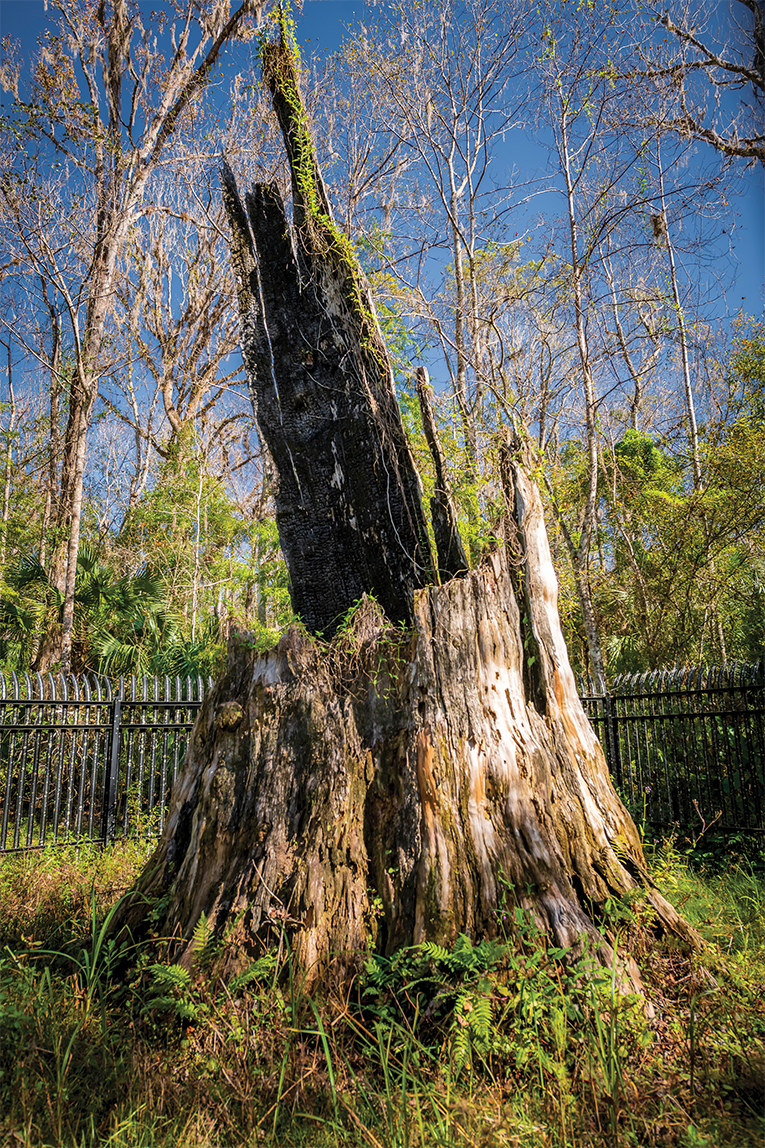
The Senator tree which was the biggest and oldest cypress trees in the world, at Big Tree Park in Seminole County Museum. (ROBERTO GONZALEZ)
Beauty from ashes
Something had to be done with the tree’s remains. The county selected four local artisans to bring beauty from ashes. “We basically said, ‘You guys collect the wood,’” Duby says. “‘Out of half of it, you make something and give it to us. With the other half, you can make something and sell it to recoup your costs.’” Charcoal from the remains was mixed into epoxy to strengthen the remnants.
Wood burnings, carvings, and an electric guitar—artwork of all kinds—rose from the remains of the storied tree. They displayed some items at the Museum of Seminole County History and other county institutions, while they sold others to fund a traveling historical exhibit about The Senator.
“The idea was to preserve the legacy and tell the story in a way you could point back and talk about ecological heritage in the same way you talk about cultural heritage,” Lloyd, the museum coordinator, says. “We’re treating The Senator as a character of sorts because of its notable effect on the county and its history and heritage.”
fter all, Lloyd says, we view trees as “that stalwart eternal guardian”—until, as we are reminded, they are no more.
Home | Building Back Safer After Hurricane Ian | The Florida Wildlife Corridor | 10 ways to connect (with) the Florida Wildlife Corridor | The Tree That Was a Testament to Time | SeaWorld Expands Manatee Care Facility | 10 Fun Facts about the Manatee | Conservation Guide Map

